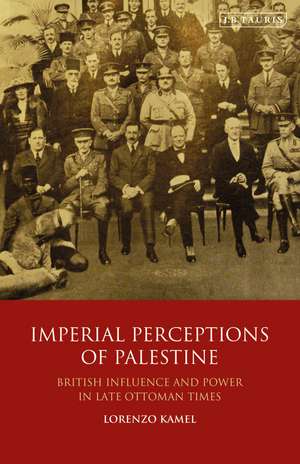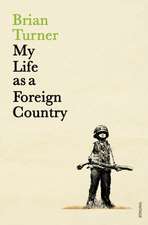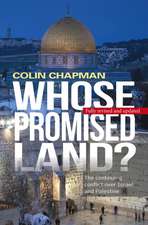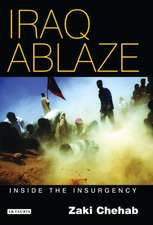Imperial Perceptions of Palestine: British Influence and Power in Late Ottoman Times
Autor Lorenzo Kamelen Limba Engleză Paperback – 27 noi 2019
| Toate formatele și edițiile | Preț | Express |
|---|---|---|
| Paperback (1) | 231.16 lei 6-8 săpt. | |
| Bloomsbury Publishing – 27 noi 2019 | 231.16 lei 6-8 săpt. | |
| Hardback (1) | 774.20 lei 6-8 săpt. | |
| Bloomsbury Publishing – 29 iul 2015 | 774.20 lei 6-8 săpt. |
Preț: 231.16 lei
Preț vechi: 281.26 lei
-18% Nou
Puncte Express: 347
Preț estimativ în valută:
44.23€ • 46.31$ • 36.60£
44.23€ • 46.31$ • 36.60£
Carte tipărită la comandă
Livrare economică 05-19 aprilie
Preluare comenzi: 021 569.72.76
Specificații
ISBN-13: 9781788313537
ISBN-10: 1788313534
Pagini: 312
Ilustrații: 13 bw integrated
Dimensiuni: 138 x 216 x 21 mm
Greutate: 0.36 kg
Editura: Bloomsbury Publishing
Colecția I.B.Tauris
Locul publicării:London, United Kingdom
ISBN-10: 1788313534
Pagini: 312
Ilustrații: 13 bw integrated
Dimensiuni: 138 x 216 x 21 mm
Greutate: 0.36 kg
Editura: Bloomsbury Publishing
Colecția I.B.Tauris
Locul publicării:London, United Kingdom
Notă biografică
Lorenzo Kamel is Marie Curie Experienced Researcher at the University of Freiburg's Institute for Advanced Studies (FRIAS). He is also a Senior Fellow at the Istituto Affari Internazionali (IAI) and a non-resident Associate at Harvard University's Center for Middle Eastern Studies
Cuprins
Table of Contents*Introduction. The simplification of "the others". P.I. From prophecies to empire. P. 1. The "Jewish client state". P. 2. Cultural imperialism. The influence of the Palestine Exploration Fund. P.3. Suez and Cyprus, setting the stage. P.3.1. Disraeli's legacy. P.II. The standard conquest myth. P. 1. Who are the Palestinians? P.1.1. The "foreigners' approach". P. 2. What is Palestine? P.III. The ownership of the land. P.1. The reformist context. P.1.1. Tanzimât's impact. P.2. Land tenure classifications. Focus on late Ottoman Palestine. P.3. The mushâ and the dangers of a simplified approach. P.4. The (mis)representation of the land and its local majority. Dynamics of land alienation. P.5. Decostructing the land tenure issue. P. IV. Zionism: beyond the either/or. P.1. "Leshana haba'ah biYerushalaim!". P.2. Zionism misrepresented. P.3. Effects on the ground. P.3.1. The desert without a people. P.3.2. The process of "extra-territorialization". P.V. Zion-London. The Archimedean point. P.1. The rise of Berlin. P.2. Despite it all, London. P.3. Anti-Semitism made in England. Towards the Balfour Declaration. P.VI. Palestine's "non-Jews". P. 1. Framing the Balfour Declaration. P.2. The tunnel's two sides. P.3. Messianic times. P.4. Mark Sykes's "door of hope". P. 5. Garden Suburb, the turning point. P. VII. Mandate for Palestine: legitimizing the simplification process. P.1. Colonialism's new faces. P. 2. Hand-picked leaders. P.2. San Remo Conference: whose land? P.3. Churchill's mark. P.VIII. Divide and rule: the creation of the Transjordan Emirate. P. 1. Jordan and/is Palestine? P.2. The region's less colonial border. P. IX. Hajj Am?n al-?usayn? and the Supreme Muslim Council. The longa manus of London. P.1. Imperium in imperio. P. 2. The "Gran Muft?" of Great Britain? P.3. The whys of a nomination. P.4. Towards a new Palestinian historiography. P. X. Breaking the standardization process: getting back into history. P. 1. The perception of the archives. P. 2. The archival deficit. P.3. The case of Abu Dis. P.4. The archives of the future. P. Epilogue. P.












